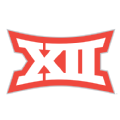Conference play is beginning in earnest and for the first time this season we're seeing a steady stream of quality games played in home-court settings. Much basketball remains to be played, but we've already seen enough to come to some conclusions on the major men's Division I conferences and where they rank in 2024 -- particularly before one of them disappears in a few months.
To put those conclusions on the record at the very beginning of the calendar year, ESPN.com's Joe Lunardi and John Gasaway sat down and ranked the major conferences. Balancing measures of top-to-bottom strength like KenPom with less comprehensive metrics like AP rankings and projected seeds, they came up with their very own combined rankings. Here's how they see the power conferences shaping up, counting down from No. 6 all the way to No. 1.

6. Pac-12
John Gasaway: Let's begin with the league that appears to be vanishing as an entity. With four teams heading to the Big Ten next season (Oregon, UCLA, USC and Washington), four to the Big 12 (Arizona, Arizona State, Colorado and Utah), two to the ACC (Cal and Stanford) and two to the West Coast Conference (Oregon State and Washington State), that leaves zero programs remaining for 2024-25. Happy New Year, Pac-12.
It just so happens that in its last season, the Pac-12 rates out as the weakest of the six major conferences. Yes, Arizona is a potential national champion. Past the Wildcats, however, there's either a lack of conference strength or, to strain optimism to its fullest, many teams that are yet to put the pieces together. Traditional contender UCLA might have its weakest offense in 20 years. USC is 6-7. Oregon has taken a half step back since missing the tournament last season. The best of the bunch might turn out to be Colorado or Utah, both of which are showing up as middle seeds in Joe Lunardi's Bracketology.
Speaking of Joey Brackets...
Joe Lunardi: The Pac-12 could go out with a bang or a whimper in its final season. It depends on Arizona, as the Wildcats are seemingly capable of both a national championship or a first-round flameout like the one we witnessed last year against Princeton. There are no other Final Four-level teams in the conference, which will otherwise struggle to reach its NET-era bid average of four tournament teams. And let's be kind and not even mention UCLA at this point. In the meantime, the No. 1 seed in the West -- with friendly regional stops in Salt Lake and Los Angeles -- is Arizona's to lose.
Pj Hall throws down powerful dunk vs. Queens NC Royals

5. ACC
Lunardi: ACC officials continue to reference a "perception" problem for a conference long-considered the greatest in college basketball history. The data strongly confirms what should be obvious: the ACC's problem is far more about performance than perception. Since COVID-19 began, the ACC is fourth both in tournament teams per year and NCAA tourney record (25-17, .595). And its average team seeding (7.71) is dead last among power conferences.
As this year's nonconference schedule comes to a close, it's more of the same. The ACC projects more bids (5) than only the Pac-12. And, while the average seed projection is a little better (6.0), the league is nowhere near a No. 1 seed after averaging better than one per year for over two decades. When the ACC's best-seeded team is Clemson -- no disrespect to the Tigers, who have more than earned that status -- something isn't right. The problem is on the court, as this ranking makes clear.
Gasaway: In 2019, Mike Krzyzewski and Roy Williams prowled the sidelines, the ACC produced three of the NBA's first four draft picks and Virginia won a national title. Those were the days. To be sure, Hubert Davis took No. 8 seed North Carolina to the 2022 national championship game (defeating No. 2 Duke to do so), but on the whole, the conference has seen better stretches than the past four seasons. Perhaps Clemson and potential ACC Player of the Year PJ Hall can change the league's trajectory. The Tigers are three points away from being undefeated and are projected as a top-four seed. Even so, the league lags rivals not named the Pac-12 in terms of AP poll heft and, especially, top-to-bottom strength.

4. Big East
Gasaway: Maybe Dave Gavitt was onto something. When he oversaw the founding of the Big East in 1979, the idea was that it was high time for the East's traditional powers to form their own basketball "super conference" -- with an emphasis on basketball. Today the league is content to navigate its own relatively quiet organizational path even as four other major conferences expand (and the fifth potentially passes out of existence).
This basketball-centered approach is yielding high returns again in 2024. UConn and/or Marquette could end up as a No. 1 seed before all is said and done. Creighton may yet outperform what to this point has been a rather subdued win-loss record. Providence is making a smooth transition to the Kim English era. Villanova is 8-1 against opponents not located in Philadelphia. Not to mention the rest of the league features coaches the caliber of Rick Pitino, Ed Cooley and Sean Miller, to name but a few. It's steady as she goes in the league that Gavitt built.
Lunardi: The Big East enters the new year with its most momentum since the basketball-only realignment of 2013-14. And that's saying something for a league with three national championships in those 10 years. Defending NCAA champ UConn is very much in the picture again this year, with Marquette and perhaps Creighton also holding legitimate Final Four expectations. The Big East is also the only remaining power conference to play a true round-robin regular-season schedule, giving its league race additional juice and legitimacy. When Villanova is your dark horse -- three Quad 1 wins despite a sixth-place finish in Philly's Big 5 -- that's a very good league.
Zach Edey puts up a remarkable 28-point, 15-rebound double-double in No. 2 Purdue's win vs. No. 4 Marquette.

3. Big Ten
Gasaway: While there's still a good deal of basketball to be played, the Big Ten may well be on the cusp of producing the first winner of back-to-back Wooden Awards in men's hoops since Ralph Sampson. Take a bow, Zach Edey. Your dominance of the game is reaching truly historic proportions. Something unexpected will need to transpire for Purdue not to earn its second consecutive No. 1 seed. True, we all know how that turned out last time, but perhaps this really is the year the Boilermakers reach their first Final Four since 1980.
Past Matt Painter's team, there is a good deal of strength, albeit with question marks. Michigan State was ranked No. 4 in the preseason, and it's possible the Spartans are finally turning a corner. Wisconsin has suffered three losses to strong opponents by double-digit margins, though the Badgers' shot volume has been outstanding. Ohio State appears poised for a return to the field of 68. Illinois finds itself with matters larger than basketball to ponder.
Lunardi: The Big Ten continues to uphold a reputation of doing the least with the most. Since 2019, the conference has collected two more NCAA bids per year than its closest competitor, but has squandered that bulk by compiling the only losing tournament record among power six leagues (which should be impossible given an overwhelming seed advantage). Is this the year the Big Ten finally breaks its 23-year national championship drought? Only if Purdue can shake its recent NCAA doldrums. That's an excellent horse to ride, of course, but it's also fair to point out the Boilermakers have lost to a 15-seed and a 16-seed in consecutive seasons.

2. SEC
Lunardi: These are high times for SEC basketball, where the depth of teams and quality of play on the men's side has just about caught up to its longtime dominance in women's hoops. All the conference had to do was invest in top coaches, schedule better -- especially the old SEC West schools -- and, of course, win. It hasn't paid off in a national title since Anthony Davis led the Kentucky juggernaut all the way in 2012, but the conference is knocking on the door.
In the past six NCAA tourneys, the SEC has produced 15 Sweet 16 teams. That's 25% above the Big Ten's number, for instance, and more like the longtime ACC strategy. Bulk is what's needed once the games reach the 50/50 stage of the tournament. And it's going to happen again in 2024. The SEC is poised for a league-record bid total, and odds are one of those teams plays into April.
Gasaway: Joe's right. These are the best of times for an SEC that put eight teams into the field of 68 last March. Pollsters see Tennessee and Kentucky as the cream of the crop, but Alabama, Auburn, Texas A&M or, who knows, Florida or Mississippi State could have something to say about that. The Crimson Tide, for example, boast a truly fearsome offense on the one hand and five losses on the other. Whether or not this statistical prowess will translate into similarly impressive results on the court, Alabama and, increasingly, the league as a whole play a style that is both pleasing to the eye and worrisome to opponents.

1. Big 12
Lunardi: The Big 12 is clearly the top college basketball conference and has been for some time. It has won two of the past three national championships and is projecting a pair of No. 1 seeds for what would also be the second time in three years. Both categories include Kansas, of course, which remains the most important tentpole in modern college basketball. Eleven top seeds in 17 years would be phenomenal for a conference. The Big 12 has gotten that from just one member.
It has also, so far, avoided the dreaded "expansion kills your metrics" curse. It's still out there, though, as the league has multiple sub-100 teams (Oklahoma State and West Virginia) for the first time since COVID. That could be a drag on the overall numbers, but when two of your newcomers -- Houston and BYU -- rank first and second in NET, respectively, that's a good day at the office. Once again, our friend Fran Fraschilla has the best job in the sport.
Gasaway: Say hello to the best conference in the nation by a healthy margin. Houston and Kansas are consistently projected as top seeds or very close to it. New Big 12 member BYU has rocketed up the polls and could earn a league title in its first season. Soon-to-depart member Oklahoma remained undefeated until late December. (The Sooners will join Texas in moving to the SEC next season.) Baylor is, by far, the best 3-point shooting team in Division I. Iowa State, just like Kelvin Sampson's Cougars, is forcing opponents to commit turnovers left and right. The teams that are joining next season -- Arizona, Arizona State, Colorado and Utah -- better come ready to play. The Big 12 is no place for the faint of heart.


